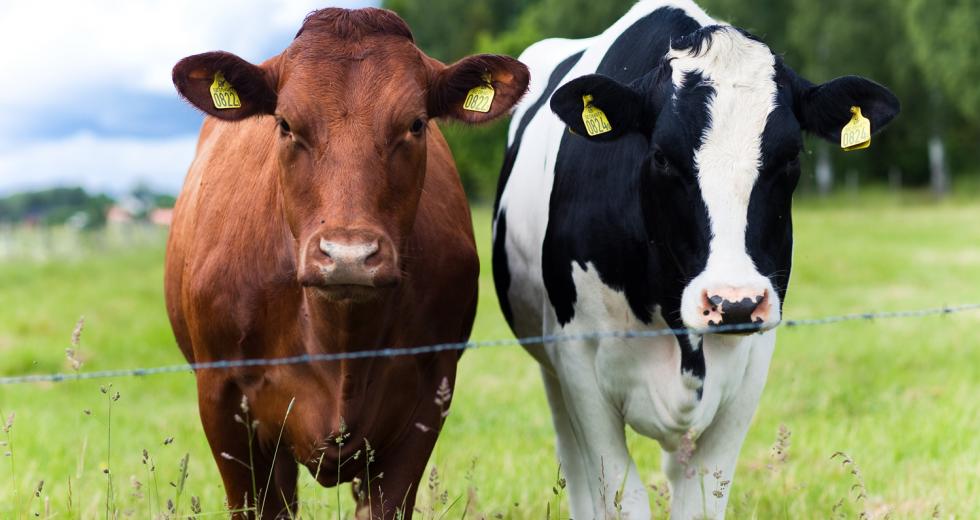Over the past five years, Californians have been trained to turn the faucet off when brushing their teeth, allow their lawns to turn dusty brown and keep their gardens alive using dishwater. These tactics, among others, allowed urban water users to reduce their average consumption by almost 25 percent in 2015. Those caught wasting water were publicly shamed by the media. The state’s almond industry, especially, has been vilified for its intensive use of California’s precious water.
However, amid such hyper-hydro-awareness, there has been conspicuously little attention paid to the production of meat and dairy, by far the biggest water guzzling industry in the state. According to a 2012 report by the Pacific Institute, an Oakland think tank that has closely studied ways to reduce demand for California’s water, the grain and alfalfa grown in California as food for cows, sheep, horses, pigs and goats consume at least 10 million acre-feet of water each year — three times what the almond industry uses. That’s just the water delivered to the crops via dams, canals and pumps. Another 10 million acre-feet of precipitation is estimated to be consumed by the plants directly. The animals themselves drink about 200,000 acre-feet more per year. Additionally, a great deal of hay and grain is grown out of state and shipped into California, though much of this supply comes from areas with plentiful summer rainfall.
The Pacific Institute’s president Peter Gleick, who co-authored the 2012 report, says Californians must alter their dietary patterns if we are to overcome the major water-related challenges facing the state.
“There are so many different pieces to the water challenge, and so many solutions,” he writes in an email exchange. “Changing diets is absolutely one of them.” According to Gleick’s research, which he conducted with colleagues Julian Fulton and Heather Cooley, 47 percent of California’s water footprint is associated with production of meat and dairy. A “water footprint” refers to water that is used to make products and provide services and which is not immediately available for further use afterward, either because it has gone into the product or evaporated. In California, the average person’s “water footprint is slightly less than the average American’s, but about 80 percent higher than the global average,” according to the Pacific Institute’s report.
Related: Meat, Water and Global Warming
Gleick says that rather than ask the public to change their consuming habits, leaders and policy makers tend to pay more attention “to old-style, traditional technical solutions, such as simply trying to find a way to extract even more water from our overstressed systems, like tapping another river or aquifer, or building another reservoir.”
David Zetland, a water policy analyst and the author of the book Living with Water Scarcity, agrees too many resources are dedicated to meat and dairy production in California. But he also believes that trying to persuade consumers to eat less of these products is going to be a long, slow (and possibly futile) uphill slog.
A more effective approach would be to rearrange the systems that produce water and food, says Zetland, who studied agricultural and resource economics at UC Davis and now lives in the Netherlands — a nation with unique water challenges of its own, thanks to low-lying land and the threat of saltwater intrusion. He suggests we start by aggressively taxing farmers for the pollution they create, like toxic runoff from livestock herds and fertilizers for crops. The other half of the equation would be to establish a fair and efficient water market, one through which farmers would pay for their irrigation needs out-of-pocket and at market rates, rather than via subsidies. Such markets, he says, now exist in Australia, Chile and Israel.
The American system is less balanced, with many American farmers paying a small fraction of what urban water districts must pay for water. For example, Zetland says southern California farmers near the Colorado River, as of September, were paying just $20 per acre-foot — one percent the price of desalinated seawater in San Diego County. Farmers growing alfalfa in this region use five feet of water per acre each year, he says. Under the revised water supply system that Zetland and others propose, food would cost what it’s supposed to and absurdly cheap meat and dairy might cease to exist.
“We’d have meat, and we’d have dairy, and we’d have almonds, but we’d have a lot less of it,” Zetland says. “It would cost more, and people would be more careful about what they ate. They wouldn’t just eat half a burger and toss the rest out the window because it cost 59 cents.”



